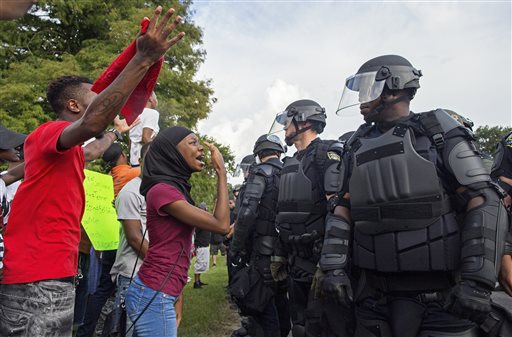Liability insurance may be a “neglected backdoor route to police reform,” according to a researcher from the University of Chicago.
Executive Summary
This article from 2016 puts forth ideas about how the insurance industry can help with police reform, which are still relevant in 2020John Rappaport, an assistant professor at the University of Chicago Law School, was talking about liability insurance for municipalities—more specifically, police liability insurance—when he presented the conclusion in a 77-page report titled “How Private Insurers Regulate Public Police.” The report was published in February 2016, well before the recent news of the tragic civilian killings by police officers and violence against police in the aftermath was reported in July 2016.

How do private insurers regulate public police?
Among other things, they put pressure on municipal leaders to terminate bad actors in police departments with threats of nonrenewal. They provide videos and online training of police officers—and some even subsidize the use of costly virtual reality simulators, which while otherwise outside the budgets of municipalities could help to decrease the number of unjustified shootings, Professor Rappaport said.
While some would argue that police liability insurance creates moral hazard (“the propensity of insurance to reduce the insured’s incentive to prevent harm”), for the most part, Rappaport focused on insurer clout in incentivizing customers to engage in loss prevention. In one section of the report, based on 29 interviews with participants in the police liability insurance industry (and other sources), he detailed the measures that insurers take to minimize losses under the liability policies they write—which, in turn, may work to reduce the potential for police misconduct.
“One insurer I interviewed even told of sending representatives incognito to visit bars frequented by police officers to listen and observe the local police culture,” he said, noting that auditing police practices is one of the loss mitigation activities that insurers engage in (sometimes outsourcing the audit activity). He also delivers some very specific suggestions about changes in pricing, policy structure (claims-made vs. occurrence) and insurance purchasing requirements that would further strengthen insurers’ efforts. In particular, he noted that at the two ends of the spectrum—for very small towns and for the largest cities—the insurance mechanism may not be working as well as it could to incentivize the best behavior.
• Small municipalities. Because small municipalities (in the size range of Ferguson, Mo.), probably don’t pay enough premiums for liability insurance to warrant a lot of attention to loss-prevention efforts from the insurers (not economical) or the insureds (discounts for good experience not impactful), Rappaport proposed required pooling for cities and towns under a certain size before buying insurance. And when they buy in a group, insurance regulators need to impose a ban on first-dollar coverage, he suggested, referring to the concept of insureds having “skin in the game.”
• Large municipalities. On the other end of the size spectrum—cities like New York, Chicago, Dallas—the professor suggested that purchase of private insurance should be required. Today, the largest municipalities self-insure, which means that loss-reducing mechanisms of private insurance are not operating, he noted.
In related commentaries, published here and here, Professor Rappaport discussed some specific ideas about pricing geared to curb high-severity, low-frequency wrongful conviction events. Here, he suggested raising rates when police forces don’t record witness interrogations on video, for example.
The problems in our society that are prompting police officers to shoot citizens and citizens to protest against them do not have easy fixes for sure. Still, Professor Rappaport’s report, with its thorough review of the history of liability insurance and insurance and self-insurance mechanisms in place today, delivers some interesting insights that might put our readers in the mix toward building solutions.
The complete 77-page research paper, “How Private Insurers Regulate Public Police,” is available here.
Rappaport has also penned some shorter commentaries for the Washington Post and the Columbia Law School Blue Sky Blog:
- “Cops can ignore Black Lives Matter protesters. They can’t ignore their insurers,” Washington Post, May 4, 2016
- “Does the path to true police reform run through liability insurers?” Washington Post, April 11, 2016
- “How Private Insurers Regulate Public Police,” The CLS Blue Sky Blog, March 3, 2016
(Hat tip to Jim Weiss, director of analytic solutions at ISO, who included a link to the May 4, 2016 Washington Post article in an article about insurance opportunities tied to politics and political campaigns which he wrote for Carrier Management.)
For discussion of a related but slightly different idea—requiring liability insurance purchases for individual police officers, with surcharges for misconduct directly paid by the officers—see the June 27,2016 NPR Report titled, “To Change Police Practices, A Push for Liability Insurance in Minneapolis.”





















 Northern California Flooding This Weekend Caused by Heavy Rain, High Tides
Northern California Flooding This Weekend Caused by Heavy Rain, High Tides  Breaking: Andersen to Replace Zaffino as CEO of AIG on June 1
Breaking: Andersen to Replace Zaffino as CEO of AIG on June 1  Five AI Trends Reshaping Insurance in 2026
Five AI Trends Reshaping Insurance in 2026  Why ‘Good Enough’ Is Killing Insurance: The Hidden Cost of Satisficing
Why ‘Good Enough’ Is Killing Insurance: The Hidden Cost of Satisficing 






